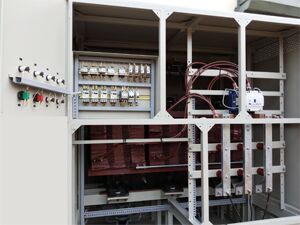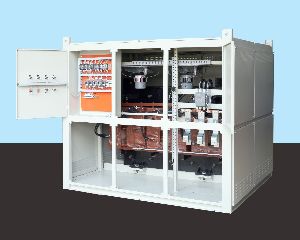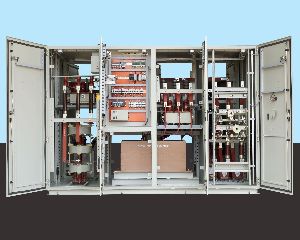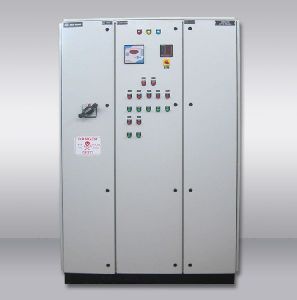Mobile : +91-8499080006
- GST No. 36AAFFI1759K1Z3
- Send SMS
- Send Email
| Business Type | Manufacturer, Exporter, Supplier, Retailer |
| Technology | As FCMA Technology |
| Input Voltage | 415V to 15KV |
| Power | 10KW to 6000KW |
| Click to view more | |
Preferred Buyer From
| Location | Worldwide |
Product Details
Generally Slipring Induction Motors are used for applications which needs High Starting Torque & same is achieved by connecting additional starting resistance in the rotor circuit. The resistance needs to be reduced continuously in steps to increase the speed of the Motor so that the required torque is maintained.
Slip dependent Rotor Resistance Starter / Controller are designed with lossy core & based on Rotor frequency dependant resistance design. This provides a low starting current with automatically reducing resistance which is inversely proportional to motor speed to provide enough starting torque & accelerate the motor with driven equipment to full speed smoothly without Electrical & Mechanical jerks.
Slip dependent Rotor Resistance Starter is connected to the Rotor Terminals of the motor, so that the starting current is limited to a low value with a high starting torque. Motor acceleration is smooth, step less and jerk less, as resistance reduction is step less and automatic. After reaching motor to full speed, Rotor Starter will be out of circuit with the help of inbuilt bypass contactor and during running motor will be acting as Squirrel cage induction motor.
These starters sense zero-speed automatically and offer high value (100%) of resistance at every new start. Thus avoid motor damage.
The Rotor Starter is designed in such a way that the resistance offered by it is frequency dependent. When the motor starts from zero speed the rotor frequency equal to supply frequency and the Rotor Starter resistance is maximum.
Salient Features:
- Slip dependant Resistance provides automatic resistance variation during acceleration.
- Low Starting current.
- High starting torque.
- Built in bypass contactor.
- No moving parts & stepless cutting of Resistance.
- No maintenance.
Data Required for Designing Starting Current:
- Motor Data sheet with details of :- kW, I, V, F, N, PF, Effic, etc.
- Driven equipment / Application details.
- Motor Rotor Voltage (RV) & Rotor Current (RA).
- Motor thermal withstand curve.
- Motor current - speed curve.
- Motor torque - speed curve.
- Load torque - speed curve.
- Motor Rotating Inertia (GD2).
- Load Rotating Inertia (GD2).
- Motor No. of starts per hour.
- Ambient condition.
Applications:
- Cement industry - Ball mills, Wagon unloaders, Cement mills, Conveyors etc…
- Steel industry - Ball mills, Conveyors etc…
- Mines - Crushers, Conveyors, Pumps etc…
- Sugar industry - Pumps, Fibrisors, Cutters, Levellers & applications which requires high starting torque.
Comparison Table
Comparison Between Liquid Resistance Starters And Automatic Slip dependent Rotor Starters
| Parameter | LRS | ARS |
| Operating Principle | Resistance offered by resistive liquid, independent of rotor frequency | Resistance created by eddy current loss dependent on rotor frequency |
| Starting current | Vary between starts depends on temperature of liquid for same concentration and distance between electrodes | Independent and constant starting performance for every start independent of temperature |
| life time of the starter |
Depends on |
Independent and same as motor life |
| Moving parts involved in operation in Power circuit | Yes -Moving electrodes | NO Moving parts |
| Time between starts | depends on 1.Previous start 2.Ambient conditions |
Independent and no limitations on between starts. |
| External Resistance variation Vs. Motor speed | independent of motor speed . To made dependent on motor speed , one has to go complex feed back mechanism | By design principle itself resistance is inverse proportional to motor speed |
| Starting Over currents | Incase of counter load on motor is more , than possibility of over current bypass due to independent movement of electrodes | NO possibility of over current , because resistance in circuit until motor reach full speed |
| Initial Cost | Low | High |
| Maintenance cost | High | No maintenance cost |
| Regular maintenance | Required | Not required |
| Auxiliary motor | Required for movement of electrodes | Not required |
Looking for "Automatic Rotor Resistance Starter" ?
Explore More Products





